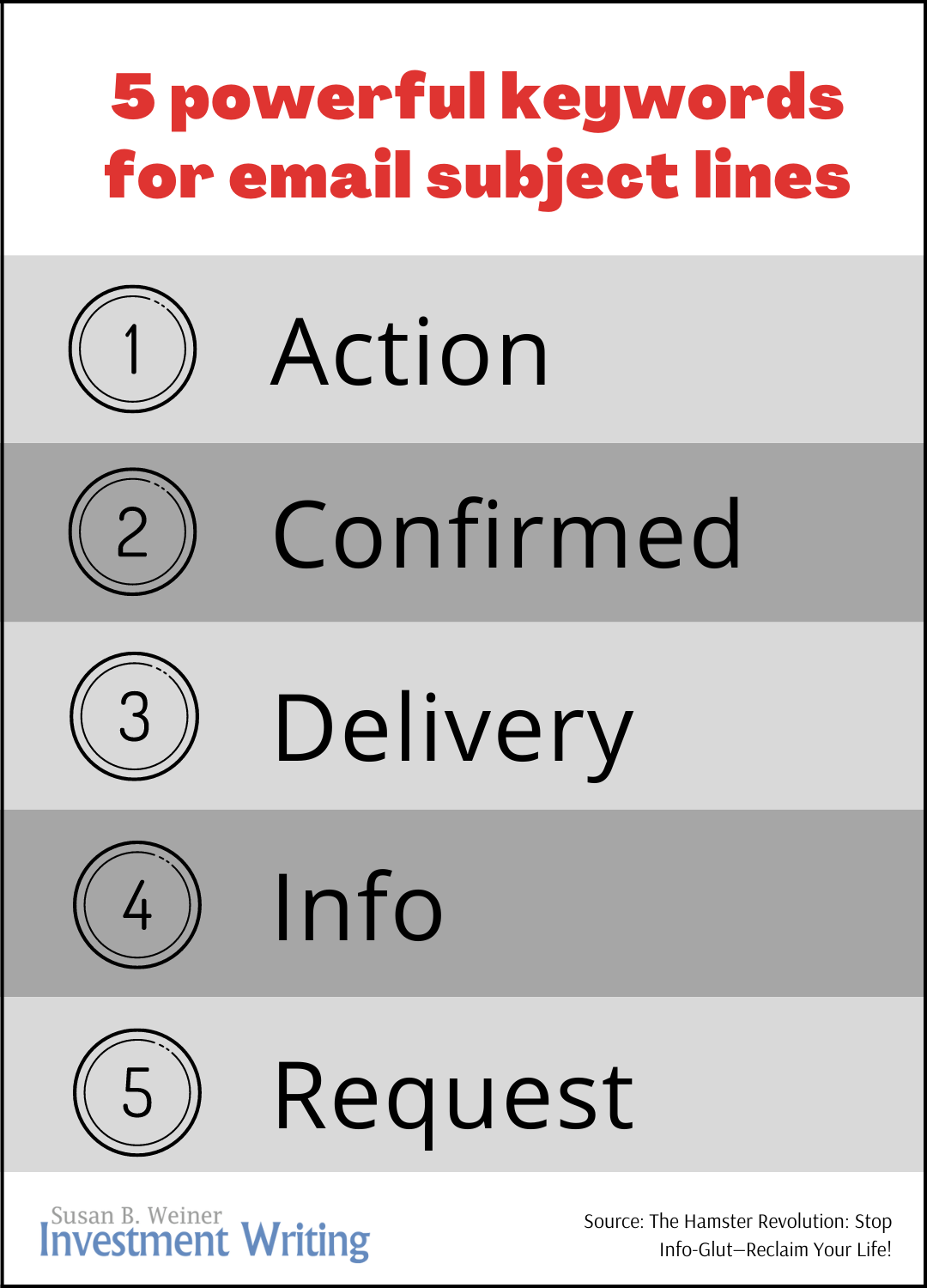Improve your email subject-line vocabulary with “The Hamster Revolution”
Boosting the power of your email subject lines is the best way for most people to boost the effectiveness of their emails. It’s a focus of my email presentations.
In this post, I share subject-line tips from The Hamster Revolution: Stop Info-Glut—Reclaim Your Life! by Mike Song, Vicki Halsey, and Tim Burress. Some of their suggestions may be most useful to team members who email each other frequently.

Start email subject lines with these keywords
The Hamster Revolution suggests starting your email subject lines with words that define their category. “These categories build context and rapid comprehension for your reader,” say the authors.
Here are the category words recommended by the authors:
- Action
- Confirmed
- Delivery
- Info
- Request
1. Action and 5. Request
The authors don’t say when to use “Action” instead of “Request.” I see the two as overlapping. Either word could start a subject line saying “help George to prepare plan.” In my opinion, you can drop “Action” in favor of “Request,” which is #5 on their list.
2. Confirmed
“Confirmed” can precede the details of an appointment or agreement. For example, “Confirmed: Oct. 15, 3 p.m. meeting.”
3. Delivery
The meaning of “delivery” in an email subject line isn’t immediately clear. For this reason, it’s most appropriate for use with members of your team after you train them in its meaning.
Here’s how Hamster Revolution defines it:
Delivery is used when you’re responding to a specific request. It’s your way of saying “I’m delivering exactly what you requested.”
4. Info
To me, “Info” signals that an email simply provides information; it doesn’t require a reply. If I’m waiting for that information, I quickly realize that the sender has satisfied my needs. On the other hand, I may be able to file the email without reading it. That’s a time-saver.
I’m more likely to use FYI than “Info,” but either is fine.
Handy abbreviations
Abbreviations can help teams to communicate more efficiently. When I led an investment communications tea m at an investment management firm, we used “EOM.” As I discussed in “Fit it in your subject line EOM,” EOM appears at the end of the subject line and is short for “end of message.” It means that there’s no need to open the email because the entire message appears in the subject line.
The Hamster Revolution suggests two more subject line abbreviations:
- NRN for “no reply needed”
- NTN for “no thanks needed”
I can imagine both abbreviations saving time for teams. However, NTN could seem a bit obnoxious, as if you’re saying “You really ought to thank me, but I’ll let you get away without doing it.”
Best for team emails
These subject line tips will be most powerful when used with your team members, especially after you’ve trained them on their use.
When communicating with clients, you may prefer to skip category words in favor of other powerful words. For example, if clients are waiting for information on the XYZ Fund, the subject line “XYZ Fund info” more efficiently conveys your message than “Info: XYZ Fund.” This is because readers focus more on the first words of your email subject lines.
Stay away from abbreviations such as EOM and NRN with clients, unless you know they understand them. You’ll confuse them.
